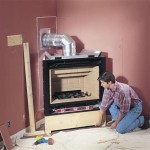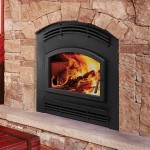Fireplace Surround Kits: A Comprehensive Guide
Fireplace surround kits offer a convenient and aesthetically pleasing solution for enhancing the visual appeal of existing fireplaces. These kits provide a prefabricated framework that encases the firebox, transforming a plain or outdated fireplace into a striking focal point within a room. The appeal of surround kits lies in their relative ease of installation, cost-effectiveness compared to custom-built options, and the wide array of styles and materials available, catering to diverse design preferences.
The market for fireplace surround kits encompasses a broad range of consumers, from homeowners seeking a simple upgrade to those undertaking larger renovation projects. Understanding the various types of kits, the materials used in their construction, and the installation process is crucial for making an informed decision. Furthermore, considering factors such as building codes, safety regulations, and the existing fireplace’s dimensions is essential for a successful and safe installation.
Types of Fireplace Surround Kits
Fireplace surround kits can be broadly categorized based on their design and installation method. The most common types include: mantel surrounds, which incorporate a decorative shelf above the firebox; flush surrounds, which create a seamless, streamlined appearance; and corner surrounds, specifically designed for fireplaces located in corners. Each type offers distinct aesthetic and functional advantages, influencing the overall ambiance and utility of the fireplace area.
Mantel Surrounds: These kits typically consist of a mantel shelf, side pilasters (vertical supports), and a header that frames the firebox opening. Mantel surrounds are often chosen for their traditional and elegant appeal, providing a surface for displaying decorative items such as photographs, artwork, and seasonal decorations. The mantel shelf also serves as a heat shield, protecting items placed on it from the direct heat of the fire. Mantel surrounds are available in various styles, ranging from simple and minimalist designs to ornate and intricately carved options. The dimensions of the mantel shelf and the overall size of the surround can be customized to fit the specific fireplace and room dimensions. Materials commonly used for mantel surrounds include wood, MDF (medium-density fiberboard), and stone veneers.
Flush Surrounds: Flush surrounds are characterized by their clean lines and minimalist design, creating a contemporary and seamless look. These kits typically consist of flat panels that are mounted directly to the wall around the firebox opening. Flush surrounds are often chosen for their ability to blend seamlessly with the surrounding décor, creating a sleek and modern aesthetic. The absence of a mantel shelf allows for a more unobstructed view of the fire, enhancing the visual impact of the flames. Materials commonly used for flush surrounds include metal, tile, and stone. The surface of the surround can be finished in a variety of textures and colors to complement the overall design of the room. Flush surrounds are particularly well-suited for gas fireplaces and electric fireplaces, where the heat output is lower, and the risk of damage from excessive heat is minimized.
Corner Surrounds: Corner surrounds are specifically designed for fireplaces located in corners, maximizing space utilization and creating a focal point in the room. These kits typically consist of two side panels that are angled to fit the corner, along with a header that frames the firebox opening. Corner surrounds are often chosen for their ability to transform an otherwise awkward or underutilized corner into a visually appealing and functional space. The design of corner surrounds can vary widely, ranging from traditional and rustic styles to contemporary and modern designs. Materials commonly used for corner surrounds include wood, stone, and brick. The dimensions of the surround can be customized to fit the specific corner and fireplace dimensions. Corner surrounds are particularly well-suited for smaller rooms or apartments where space is limited.
Materials Used in Fireplace Surround Kits
The choice of materials for a fireplace surround kit significantly impacts its aesthetic appeal, durability, and cost. Common materials include wood, manufactured stone (also known as faux stone or veneer stone), natural stone, metal, and tile. Each material possesses unique characteristics that determine its suitability for different applications and design styles.
Wood: Wood surrounds are a popular choice for their warmth, versatility, and affordability. Wood can be easily painted or stained to match any décor, and it can be carved or molded into a variety of intricate designs. However, wood is susceptible to heat damage and moisture, so it is important to choose a wood that is heat-resistant and to properly seal and protect the surface. Hardwoods such as oak, maple, and cherry are generally preferred for their durability and resistance to warping. Softwoods such as pine and fir can also be used, but they require more frequent maintenance and are more susceptible to damage. Wood surrounds are typically used for mantel surrounds and corner surrounds, where the mantel shelf provides some protection from the direct heat of the fire.
Manufactured Stone: Manufactured stone, also known as faux stone or veneer stone, is a lightweight and cost-effective alternative to natural stone. It is made from a mixture of concrete, aggregates, and pigments, and it is molded to replicate the look and feel of natural stone. Manufactured stone is resistant to heat, moisture, and fading, making it a durable and low-maintenance option for fireplace surrounds. It is also relatively easy to install, requiring no special tools or skills. Manufactured stone is available in a wide variety of styles, colors, and textures, allowing for a customized look that complements any décor. Manufactured stone is commonly used for flush surrounds, mantel surrounds, and corner surrounds.
Natural Stone: Natural stone surrounds offer a timeless and elegant look that cannot be replicated by other materials. Natural stone is extremely durable and resistant to heat, moisture, and scratches, making it a long-lasting investment. However, natural stone is also more expensive and heavier than other materials, requiring specialized tools and skills for installation. Common types of natural stone used for fireplace surrounds include granite, marble, limestone, and slate. Each type of stone possesses unique characteristics in terms of color, texture, and veining, allowing for a wide range of design options. Natural stone is commonly used for flush surrounds, mantel surrounds, and corner surrounds in high-end homes and luxury apartments.
Metal: Metal surrounds offer a sleek and modern look that is well-suited for contemporary homes and apartments. Metal is resistant to heat and moisture, making it a durable and low-maintenance option for fireplace surrounds. Common types of metal used for fireplace surrounds include steel, aluminum, and copper. Steel is a strong and durable material that can be finished in a variety of colors and textures. Aluminum is a lightweight and corrosion-resistant material that is ideal for outdoor fireplaces. Copper is a beautiful and luxurious material that develops a unique patina over time. Metal surrounds are typically used for flush surrounds and sometimes incorporated into mantel surrounds for a modern touch.
Tile: Tile surrounds offer a versatile and customizable look that can be adapted to any design style. Tile is resistant to heat, moisture, and scratches, making it a durable and low-maintenance option for fireplace surrounds. Common types of tile used for fireplace surrounds include ceramic tile, porcelain tile, and glass tile. Ceramic tile is a relatively inexpensive and versatile option that is available in a wide range of colors, patterns, and sizes. Porcelain tile is a more durable and water-resistant option that is ideal for high-traffic areas. Glass tile is a beautiful and luxurious option that adds a touch of elegance to any fireplace surround. Tile surrounds are commonly used for flush surrounds and can be incorporated into mantel surrounds as well.
Installation Considerations for Fireplace Surround Kits
The installation of a fireplace surround kit requires careful planning and execution to ensure a safe and aesthetically pleasing result. Prior to installation, it is essential to verify that the kit is compatible with the existing fireplace and adheres to all applicable building codes and safety regulations. Furthermore, proper preparation of the surrounding area and the use of appropriate tools and materials are crucial for a successful installation.
Compatibility and Building Codes: Before purchasing a fireplace surround kit, it is essential to verify that it is compatible with the existing fireplace. This involves measuring the dimensions of the firebox opening and the surrounding area to ensure that the kit will fit properly. It is also important to check the manufacturer's specifications to ensure that the kit is suitable for the type of fireplace being used (e.g., gas, wood-burning, electric). In addition to compatibility, it is crucial to ensure that the installation of the fireplace surround kit complies with all applicable building codes and safety regulations. These codes may vary depending on the location and the type of fireplace being used. It is advisable to consult with a qualified building inspector or contractor to ensure compliance.
Preparation: The preparation of the surrounding area is critical for a successful installation. This involves cleaning the wall or surface around the fireplace to remove any dust, dirt, or debris. It may also be necessary to repair any damage to the wall or surface, such as cracks or holes. If the existing fireplace surround is being removed, it is important to do so carefully to avoid damaging the surrounding wall or surface. Once the area is clean and prepared, it is advisable to apply a primer to the wall or surface to improve adhesion. The primer should be compatible with the type of material being used for the fireplace surround kit.
Tools and Materials: The installation of a fireplace surround kit typically requires a variety of tools and materials, including a level, a measuring tape, a drill, screws, adhesive, and caulk. The specific tools and materials required will depend on the type of kit being installed and the type of wall or surface it is being attached to. It is important to use high-quality tools and materials to ensure a durable and long-lasting installation. The adhesive should be specifically designed for use with the type of material being used for the fireplace surround kit. The caulk should be paintable and waterproof to prevent moisture damage. It is also important to wear appropriate safety gear, such as gloves and eye protection, during the installation process.
By carefully considering the type of kit, the materials used, and the installation process, homeowners can successfully enhance the aesthetic appeal of their fireplaces and create a warm and inviting atmosphere in their homes.

Fireplace Mantels Mantel Shelves Custom Surrounds And More Direct

White 52 Inch X 39 Wood Fireplace Mantel Surround Kit With Shelf And Trim Essex From Mantels Direct Poplar Wooden Chimney Com

Fireplace Mantels Mantel Shelves Custom Surrounds And More Direct

Modern Ember Lenwood Traditional Wood Fireplace Mantel Surround Kit Unfinished 48 Inch Opening Classic Design Tiered Frame Molding In 2024 Mantels Surrounds

Modern Ember Lenwood Traditional Wood Fireplace Mantel Surround Kit Black 48 Inch Opening Classic Design Tiered Frame Molding Com

White 52 Inch X 41 Wood Fireplace Mantel Surround Kit With Shelf And Trim Yosemite From Mantels Direct Poplar Wooden Chimney Com

Paloma Grey Marble Facing Kit In 2024 Fireplace Surround Fireplaces

Unfinished 48 Inch X 41 Wood Fireplace Mantel Surround Kit With Shelf And Trim Klamath From Mantels Direct Poplar Wooden Chimney Target
/Gallery/Fireplace%20Surrounds/florentina-fireplace-surround-stone-veneer.jpg?strip=all)
Fireplace Surrounds

Fireplace Surrounds And Hearths At The Balmer Mantel








